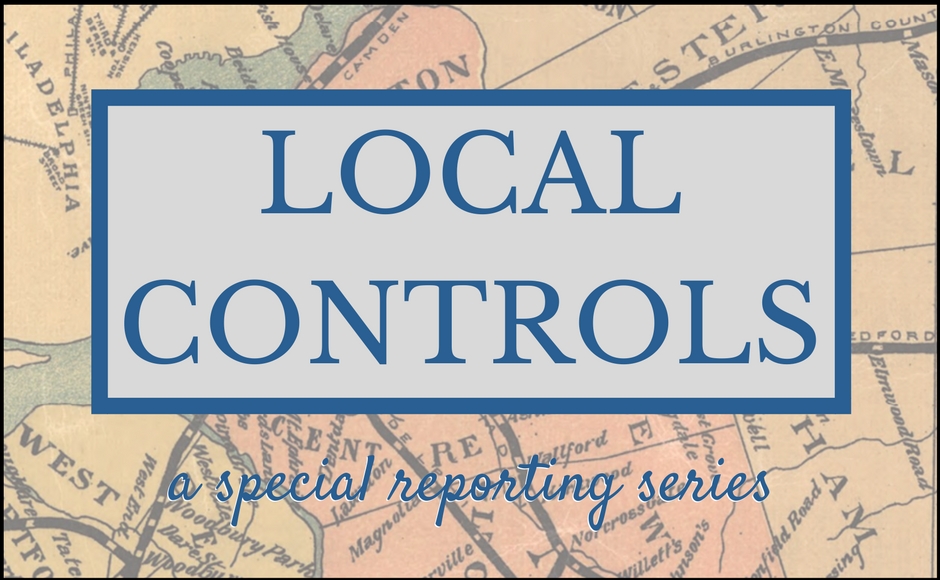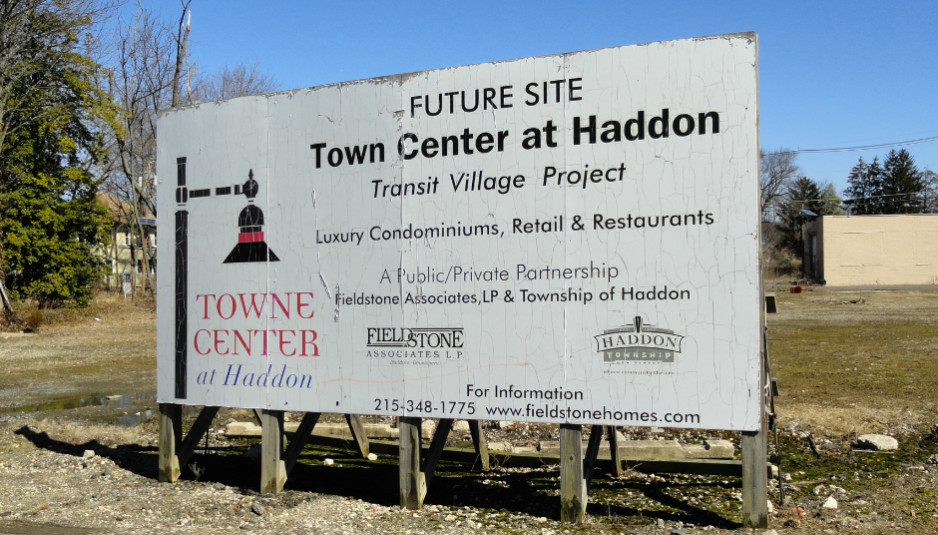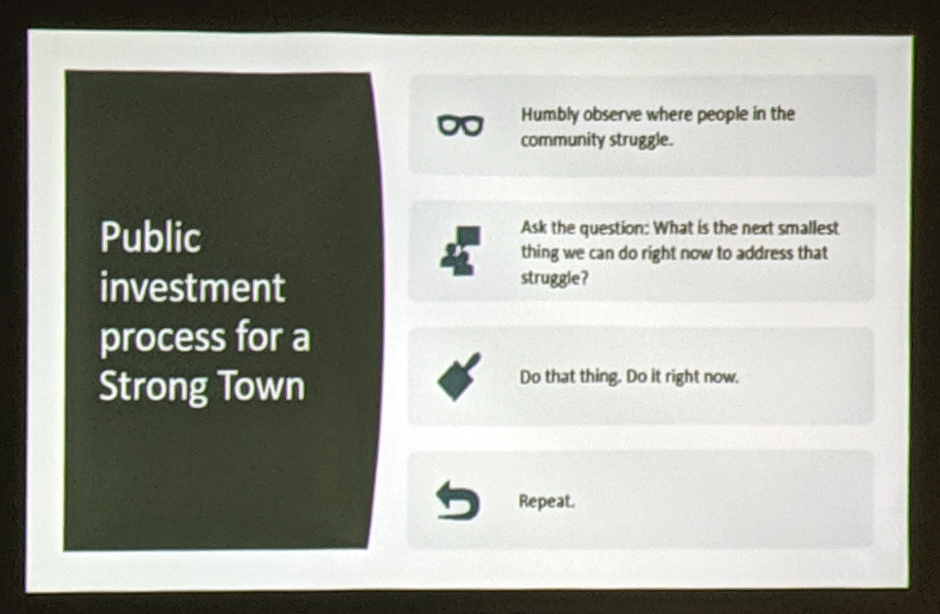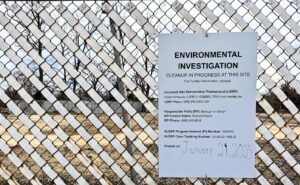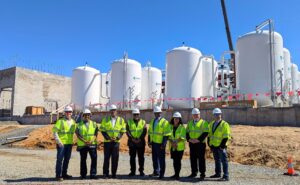How can stretched communities ‘thicken up’ against further stresses? After 70 years of trying to outgrow problems, it’s time to try smaller changes at scale, argues Strong Towns planner Chuck Marohn.
By Matt Skoufalos | December 20, 2019
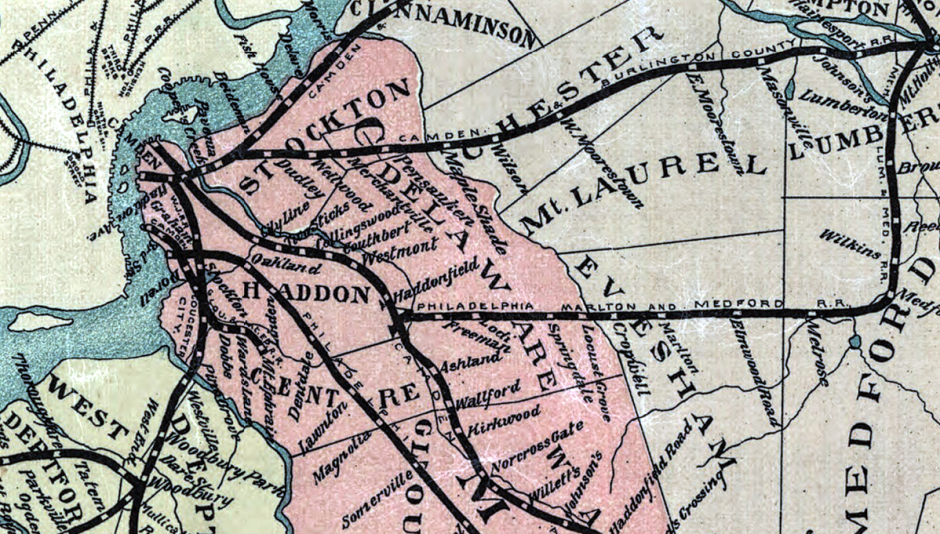
Map of the rail roads of New Jersey (1887). Credit: Library of Congress Geography and Map Division Washington, D.C.
In 2017, NJ Pen was awarded a collaborative reporting grant from the Center for Cooperative Media to identify the challenges behind municipal mergers — combining towns into a single governmental entity — and to get at the roots of the ideas behind “home rule” politics.
Together with our partners SNJ Today, Courage to Connect NJ, and University of Pennsylvania graduate student Dave Maynard, we’re exploring those questions in a reporting series entitled “Local Controls.”
At the root of this academic exercise is a simple question: What would it look like to organize six Camden County communities—Audubon, Collingswood, Haddon Heights, Haddonfield, Haddon Township, and Oaklyn—into a single entity?
Would the resulting community be more affordable? More equitable? More efficiently administered? Better able to adapt to future challenges? Could any of it be done at all without compromising notions of local identity?
We’ve gone into this project to explore a number of ideas around public policy and community values. We’ll continue our deep dive into the underlying structure of these communities in a variety of ways, from traditional reporting to live events to multimedia packages.
In our first installment, we examined the impact of railroad land grants on the size and shape of New Jersey municipalities today. For our second piece, we spoke to festivalgoers at the Audubon Day street festival about local identity. The third story covered the shortfall between current economic stressors and how historic solutions to them are no longer as manageable as they were even a few decades ago.
This story summarizes some contemporary policy theories from one of the leading advocates for smart growth in America today, planner Chuck Marohn of Strong Towns, who visited Haddon Township in November 2019.
================================================================
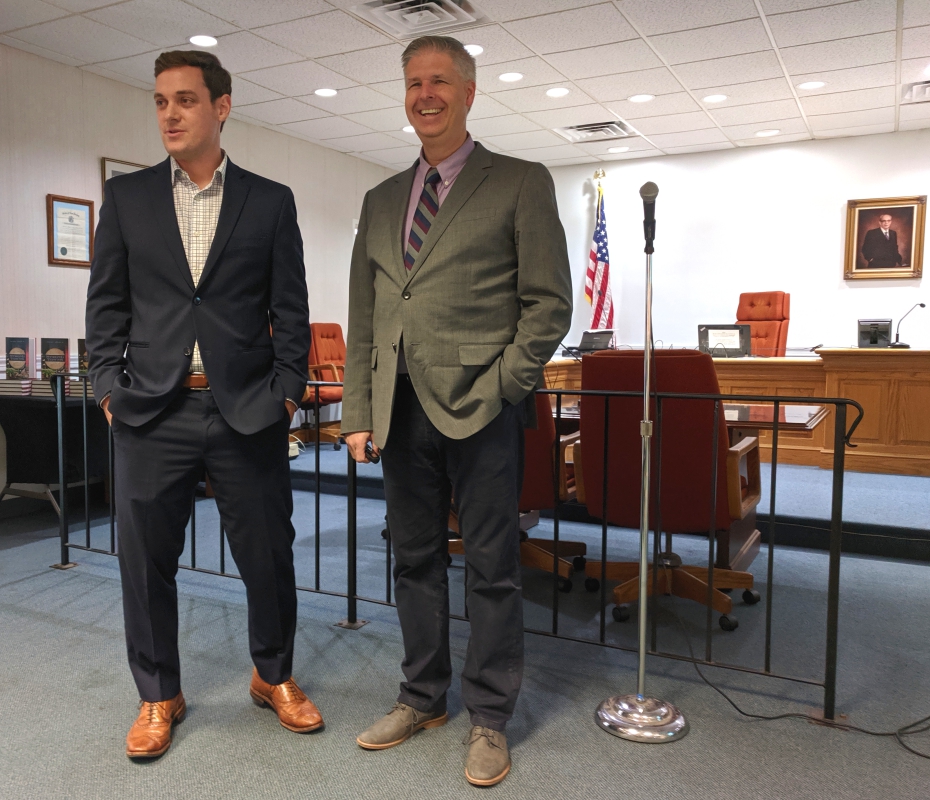
Haddon Township Commissioner Ryan Linhart (left) and Strong Towns planner Chuck Marohn. Credit: Matt Skoufalos.
When Chuck Marohn launched the Strong Towns blog in 2008, the Minnesota planner was working out ideas about the financial struggles of communities where he was consulting.
Marohn is Midwestern-humble about his aspirations in those early days, saying the site “was supposed to be a way for me to figure out my thoughts and share my ideas with a few other professionals.”
Those ideas found a broader audience, however, and not too long after Strong Towns launched, Marohn was encouraged to provide a more solid footing for his platform.
With a three-year on-ramp, he was able to exit his planning practice “and figure out what Strong Towns was going to be.
“The only thing they asked was that I share the information with as many people as possible,” Marohn said.
Since then, Marohn and his staffers have published regularly on the subjects of civic planning and design, with a strong focus on what it means—and what it takes—to create resilient communities. This year, they released a book, Strong Towns: A Bottom-Up Revolution to Rebuild American Prosperity, and while touring in support of it, paid a visit to Haddon Township at the request of the municipal government.
Haddon Township Commissioner Ryan Linhart, who organized the event, said it was an important jumping-off point for vital conversations about community, “not just about where people live, but how we take care of where we live, and how we build a community around what we take care of.”
The ideas that Marohn traveled with strike at a lot of the underlying problems of communities that are dense, older, and largely built out; namely, how can they catch up to their obligations of the past while planning for a future that looks markedly different from what they’ve known.
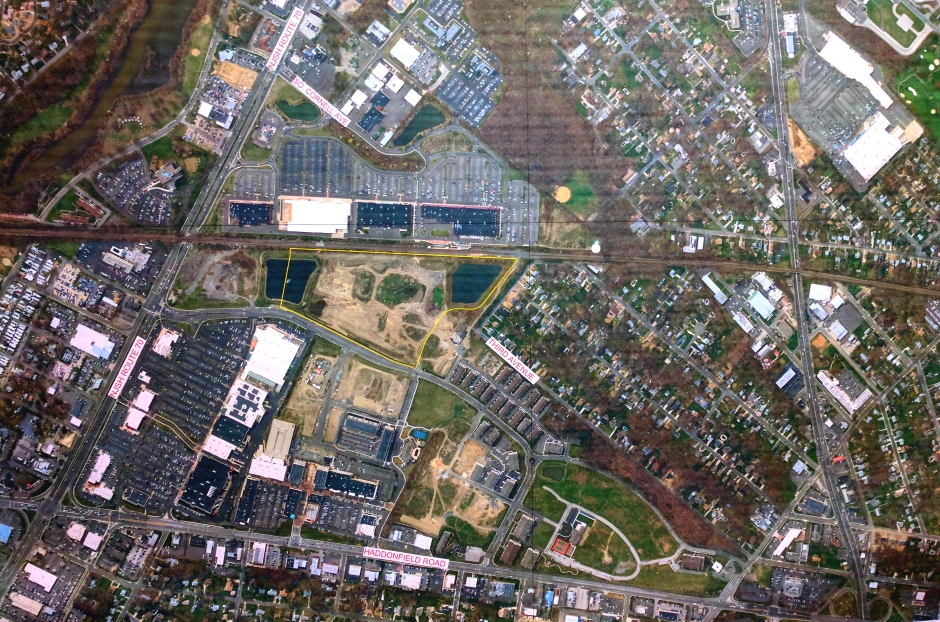
Aerial map of the Costco site in context at the Garden State Park development. Credit: Matt Skoufalos.
It’s almost a uniquely American problem, and in a state like New Jersey, which has built out dense communities along roadways that sprang up from its farmhouse roots, there’s a lot to observe in the impact of that legacy.
“When we look at how cities were build around the world, we see places that were assembled incrementally in a complex, adaptive framework,” Marohn said.
“We’re looking at things that co-evolved to exist together; space designed and created by us to respond to us and our needs.”
Complex systems are different from those that are “merely complicated,” Marohn said. A cornfield that’s overwatered or sun-baked doesn’t suddenly yield soybeans if the conditions change; it just stops producing viable crops. Stressing an engine doesn’t lead it to “evolve and become a toaster or a washing machine,” he said; “it just breaks.”
Adaptive and complex systems, however, can shift and change when they’re affected by environmental changes; they have the capacity to grow into something new that better suits their survival under these new conditions. Marohn argues that the design guidance and land use policies adopted by most communities today is problematically complicated, and nowhere near responsive enough to the problems they face.
“When we look at the way we build today, what we see is a framework that is not designed to have that degree of adaptability,” he said. “It’s designed to replicate itself in a very efficient pattern, not to be strong, resilient, and adaptable. It’s very important to understand how those adaptation approaches work in human habitat.”
The model that Marohn uses to describe the impact of these inflexible approaches to design is the city of Detroit, which, prior to the advent of the automobile, was one of the wealthiest cities in the world. The emergence of the car, and the land use principles of the “auto suburbs” that followed, eventually inspired a development pattern that became unsustainable.
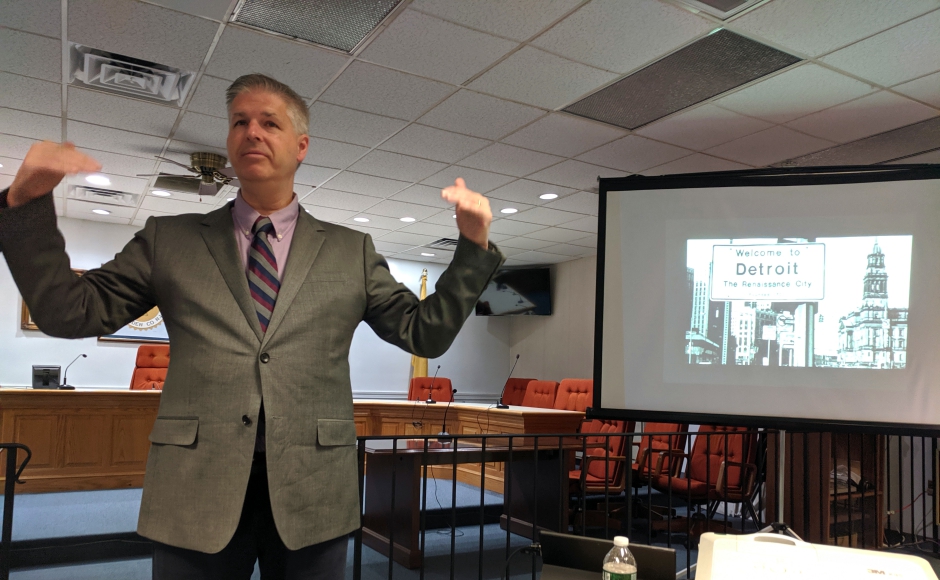
Chuck Marohn of Strong Towns speaking on the example Detroit set for communities looking to outgrow their problems. Credit: Matt Skoufalos.
“Detroit’s not some weird and crazy place,” Marohn said; “Detroit really is just early.”
“They were the first city to have auto suburbs, where people would live on the edge and drive in for work and back at the end of the day,” he said.
“They were the first city to run highways through their neighborhood to make that happen; to widen roads, build parking lots.”
However, in short order, the impact of that idea—spreading the wealth of the city
over a wider area while its tax base erodes away—presented the conditions for Detroit’s insolvency.
To Marohn, “Detroit took a system of building that was complex and adaptive, and they transferred to one that was merely complicated.”
But those lessons weren’t learned for decades to follow. By then, post-World-War-II communities that were chasing the prosperity of the suburb model began “to reshape an entire continent around those principles and ideas,” Marohn said.
By example, his hometown of Brainerd, Minnesota has the same population it did in 1955, but now occupies 10 times the area it did then.
“Where’s the wealth that’s going to be tapped to sustain that public commitment, decade after decade?” Marohn asked.
Postwar America generated economic momentum by attempting to outgrow its problems. The United States was, at the time, the only superpower largely unscarred by the conflict. All its resources and reserve capacity were then redirected toward creating “a kinetic growth machine,” with centralized building standards, zoning controls, and financial systems.
It worked, for a time, Marohn said—and then the rest of the world caught up. Meanwhile, America kept leaning on what used to work. Its inability to adapt and change allowed its addiction to growth to become “a machine that takes on a life of its own,” he said.
Commitment to continuous growth “creates a lot of liabilities, particularly for local governments,” which, 70 years later, are obligated to maintain the infrastructure that they inherited as part of growth, Marohn said.
However, as American wages have stagnated for nearly half a century, there’s less capital with which to address these growing deficits.
Most people are saving less and taking on more debt as their personal net worth and income have flattened or dropped off, “and our incomes are growing a tiny fraction of what our liabilities are growing,” Marohn said.
“This is a tradeoff that doesn’t work long-term,” he said. “Without the ability for us to continue to adapt to these stresses, the tradeoff to this growth is more insolvency.
“In order to break out of this cycle, where our cities become more and more fragile, where we take on more and more liabilities for less and less wealth, we have to go back and make better use of the stuff we’ve already built.
Marohn’s approach is to “start at the very block level” to try to “squeeze more value” out of the investments that communities have already made. He referenced pre-Great-Depression development patterns as a series of small bets made by people at scale.
“When they were successful, these places would grow incrementally,” Marohn said. “You would see more and more people move to the place. More people there made the land more valuable, transforming single-story structures into two-and-three-story structures of brick and granite.
“Now we have transferred our development approach to things that are merely complicated,” he said.
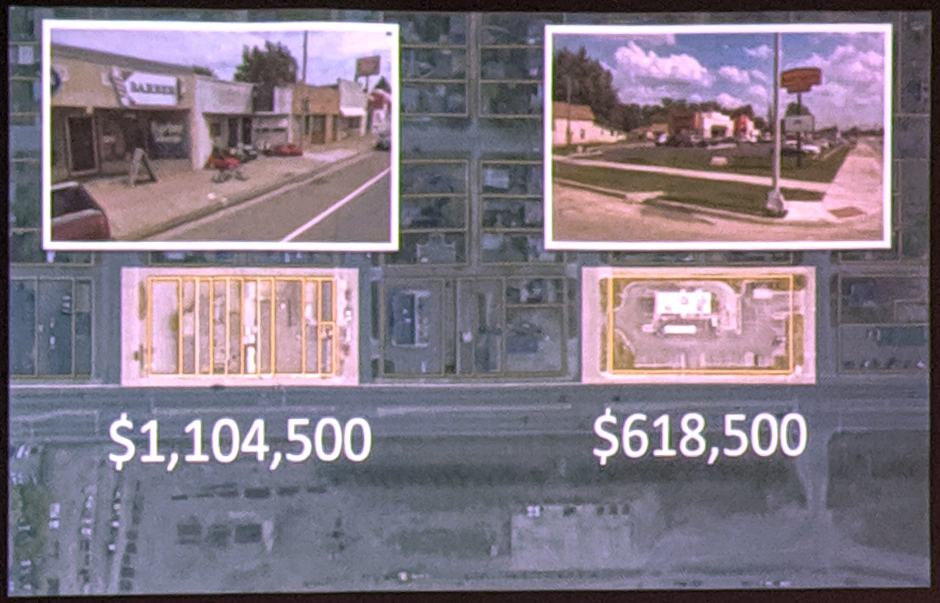
Strong Towns planner Chuck Marohn describes the difference in value created by multi-use blocks (left) versus that stemming from single-use lots. Credit: Matt Skoufalos.
Smaller, diverse, independent neighborhood blocks outperform larger, single-use blocks—like those given over to shopping centers and big-box stores—producing more wealth, paying more taxes, and strengthening the fibers of communities in which they’re housed, Marohn said.
Rather than making “enormous investments in the ground,” i.e., distributed infrastructure like parking lots, shopping centers, and the lengths of pipes and cables required to service them, he recommends that communities support policies that support incremental growth “by right” and with “as little friction as possible.”
By “thickening up” single-family neighborhoods to allow the construction of “missing middle housing” (sublets, duplexes, triplexes, quads, and accessory dwelling units), Marohn argues that communities can create the conditions under which prior generations more easily flourished in uncertain economic times.
“What we had was the capacity to have income diversity; to allow individuals in our system to make use of their property to make ends meet,” he said. “We’ve taken all those tools away.
“With the financialization of our economy, we’ve oriented these investments around investors,” Marohn said. “Now, if you can’t make your 30-year mortgage, you drive out and make way for somebody who can, and we’ll drive property values down in the interim. If no one’s allowed to fix up the home except the guy who has Wall Street capital, you’re limiting yourself.
“We need to make the bar of entry as low as possible,” he said. “We need to provide a mechanism for people to start with very little, and through their efforts and energy, make it possible for them to grow.”
Marohn’s foundational principle to engineering community improvements is that “no neighborhood should experience radical change [but also that] no neighborhood should be exempt from change.”
Strong Towns advocates a four-step program to create a positive feedback loop that can drive modest, incremental—and, critically, sustainable—change.
- Humbly observe where people in the community struggle.
- Ask the question: what is the next smallest thing we can do right now to address that struggle.
(“Not ‘what is the ultimate solution that will fix this forever more, what is the thing we can get a grant to do; not what the director of our city saw happen somewhere else,’” Marohn said.) - Do that thing. Do it right now.
- Repeat.
More than simply “adopting a good customer service ethos,” Marohn advocates that local governments should view their communities in the way planner Jane Jacobs famously did: as co-creations between local leaders and residents of a place. Communities ought to “orient ourselves to be obsessive about the struggles of people” who live there,” he said.
“If we observe where people struggle and take small, intentional steps together, we’re allowing that process of co-creation to happen,” Marohn said. “You need to have more tools for responding to stress; right now you have none.”

